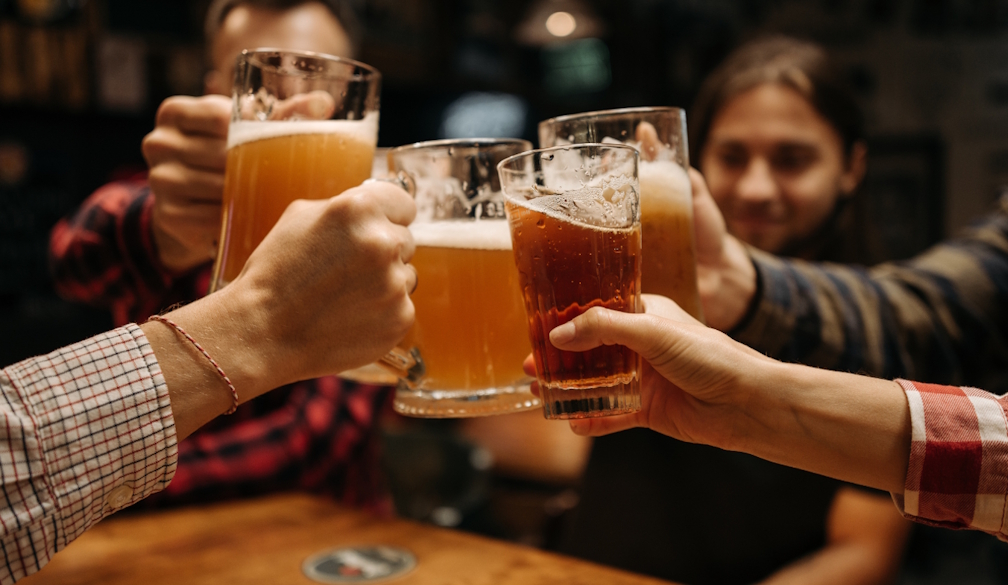A Lot of Men Like Beer, But Do They Know How Beer is Made?
- Written by Men's Weekly

Beer is one of the world's oldest and most widely consumed alcoholic drinks, enjoyed by many for its diverse flavors and refreshing qualities. While a significant number of men appreciate a good beer, how many truly understand the intricate process behind its creation? Delving into the fundamentals of brewing reveals a fascinating blend of art and science.
At its core, beer production involves four main ingredients: water, malted barley, hops, and yeast. Each plays a crucial role in shaping the final product.
Malted Barley: The process begins with malting, where barley grains are steeped in water, allowed to germinate, and then dried. This activates enzymes that convert starches into fermentable sugars. Different malts contribute to the beer's color, flavor, and body. For example, some craft breweries produce a "white Stout" which is light in color but still has the complex roasty characteristics expected from a dark stout, with notes of coffee, vanilla, and dark chocolate. Another variety, Zytho Velvet Luxe Stout, offers aromas of coffee, cream, raisin, and dark chocolate, providing a smooth and rich palate.
Water: Water constitutes the majority of beer, and its mineral content significantly impacts the beer's profile. Brewers often adjust water chemistry to suit specific beer styles.
Hops: Hops are added for bitterness, aroma, and as a natural preservative. They contribute a wide range of flavors, from floral and citrusy to spicy and earthy. Some beers, like Heineken Silver, are crafted to have a very low bitterness level, appealing to those who find traditional beer too bitter, with only 5 IBUs compared to 19 IBUs for Heineken Original.
Yeast: Yeast is the magic ingredient responsible for fermentation. It consumes the sugars from the malt and produces alcohol and carbon dioxide, along with various flavor compounds. Different yeast strains are used for different beer types, influencing the beer's distinctive characteristics.
The Brewing Process:
Milling: The malted barley is first milled or crushed to break open the kernels, exposing the starches.
Mashing: The crushed malt is mixed with hot water in a process called mashing. This activates the enzymes, converting the starches into fermentable sugars, creating a sweet liquid called "wort."
Lautering: The wort is then separated from the spent grain in a process called lautering.
Boiling: The wort is boiled, and hops are added at various stages. Early hop additions contribute bitterness, while later additions impart aroma and flavor.
Cooling: After boiling, the wort is rapidly cooled to a temperature suitable for yeast.
Fermentation: Yeast is pitched into the cooled wort, and fermentation begins. This can take anywhere from a few days to several weeks, depending on the beer style.
Conditioning: After fermentation, the beer undergoes a conditioning phase, where it ages and flavors mature.
Filtering and Packaging: Finally, the beer may be filtered for clarity and then packaged into bottles, cans, or kegs.
Understanding this process not only deepens one's appreciation for beer but also highlights the dedication and expertise involved in creating each unique brew. Craft brewers, in particular, often experiment with innovative brewing methods and unique ingredients to offer diverse experiences.
Are Boutique Beers as Good as Main Brands?
The world of beer has seen a significant shift in recent decades, with the rise of boutique or craft breweries challenging the long-standing dominance of major commercial brands. This has led many beer enthusiasts to ponder: are boutique beers truly as good as, or perhaps even better than, the mainstream options? The answer often lies in understanding the distinct philosophies and production methods behind each.
What Defines "Boutique" (Craft) Beer?
Boutique beers, often referred to as craft beers, are typically produced by smaller, independent breweries that prioritize flavor, quality, and innovation over mass production and cost efficiency. Key characteristics often include:
Ingredients: Craft brewers often use higher-quality ingredients and are more experimental with unique malts, hop varieties, and yeast strains. This can lead to a wider range of complex flavors and aromas. For instance, some craft breweries produce a "white Stout" that is light in color but still delivers the complex, roasty characteristics of a dark stout, with notes of coffee, vanilla, and dark chocolate. Another craft variety, Zytho Velvet Luxe Stout, boasts aromas of coffee, cream, raisin, and dark chocolate, offering a smooth and rich palate.
Brewing Process: Craft breweries often employ traditional, often labor-intensive brewing methods and may avoid adjuncts (non-malted grains) or artificial additives. They tend to focus on the artistry and precision of the brewing process.
Innovation and Variety: The craft beer scene is renowned for its continuous innovation, with brewers constantly experimenting with new styles, ingredients, and flavor profiles. This offers consumers an incredibly diverse range of choices, from intensely hoppy IPAs to rich stouts and sour ales.
Local Focus: Many boutique breweries emphasize local sourcing of ingredients and cater to a regional market, fostering a sense of community and unique local flavors.
The Appeal of Mainstream Brands
Major beer brands, on the other hand, focus on consistency, widespread availability, and often a milder, more universally appealing flavor profile. Their strengths include:
Consistency: Large breweries employ highly controlled processes to ensure that every batch of beer tastes exactly the same, regardless of where it's produced. This consistency is a major draw for consumers who know exactly what to expect.
Accessibility and Price: Mainstream beers are readily available in almost any store or bar and are typically more affordable due to economies of scale in production and distribution.
Familiarity: For many, mainstream beers are a familiar and comforting choice, often associated with social gatherings and everyday consumption. Some brands, like Heineken Silver, are specifically designed to have a very low bitterness level (5 IBUs compared to 19 IBUs for Heineken Original), catering to a broader audience that may find traditional beers too bitter.
The Verdict: A Matter of Preference
Ultimately, whether boutique beers are "as good as" main brands is subjective and depends entirely on individual preference.
If you prioritize consistency, affordability, and a universally familiar taste, mainstream brands will likely remain your go-to.
If you seek complex flavors, unique aromas, innovative styles, and appreciate the artistry and local character of brewing, boutique beers will undoubtedly offer a more exciting and diverse experience.
The growing popularity of craft beer suggests that many consumers are indeed valuing the unique qualities and diverse offerings of boutique breweries. However, the market for mainstream beers remains robust, indicating that both have a valuable place in the beverage landscape. The best approach is often to explore both worlds, discovering what truly satisfies your palate.







